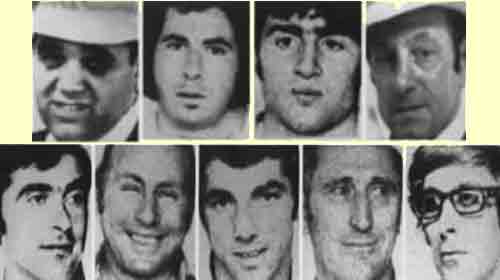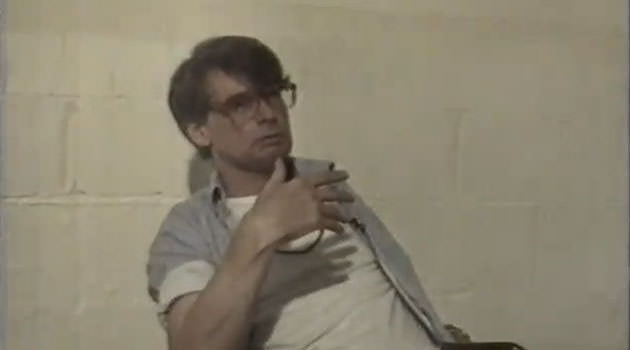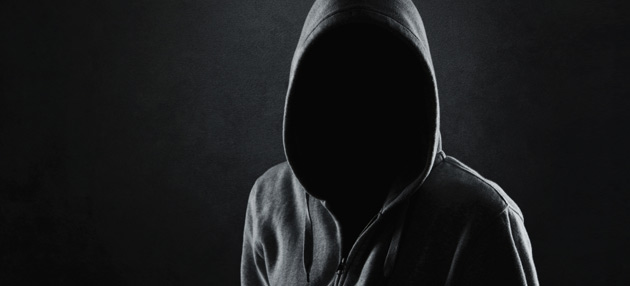Steven Spielberg’s Munich depicts how a terrorist group that called itself ‘Black September’ held the Israeli Munich Olympic team to hostage, made their demands, and when the West German authorities tried to trap the terrorists cunningly, it led to a skirmish resulting in the death of all 11 athletes. The death of the athletes was avenged by an Israeli group called ‘Wrath of God’ formed with explicit approval of the then Israeli President, Golda Meir.
The 1972 Munich Olympic Games were in full swing and well into the second week. The environment was purposely kept light and jovial by the West German Olympic Organizing Committee primarily to wipe off the bitter memories of the bygone times, particularly the Berlin Olympics of 1936, which had been used for Nazi propaganda by Adolf Hitler. According to certain resources the security in the athletes’ village was not very tight and the athletes could go out and return without having to present proper identification. The chain-link fence put up around the village was also often breached by the athletes.
Israeli delegation with Shmuel Lalkin as its head and also officials much superior to him in the hierarchy had expressed their concern about the security of their team considering that and the team was stationed in building located in a relatively isolated area within the Olympic Village, near one of gates with no armed security guards keeping watch. The Israeli request to house the team either in the same a building as the American team or in a building nearby also went unheeded.
The West Germans did not want to employ excessive security for the fear of creating an atmosphere reminiscent of the 1936 Olympics under a Nazi Germany. Certainly, they hadn’t realized that they were to pay a heavy price for the gamble.
 On the evening of September 4, 1972, after having enjoyed Fiddler on the Roof followed by a dinner with the Israeli actor of the play, Shmuel Rodensky, the Israeli Olympic team was fast asleep when at around 4:30 a.m. (September 5, 1972), eight men in tracksuits carrying duffel-bags scaled the fence and landed inside with the help of a few other unsuspecting athletes who were themselves getting into the Olympic Village stealthily after a night out. In their duffel-bags they carried assault rifles, pistols and grenades.
On the evening of September 4, 1972, after having enjoyed Fiddler on the Roof followed by a dinner with the Israeli actor of the play, Shmuel Rodensky, the Israeli Olympic team was fast asleep when at around 4:30 a.m. (September 5, 1972), eight men in tracksuits carrying duffel-bags scaled the fence and landed inside with the help of a few other unsuspecting athletes who were themselves getting into the Olympic Village stealthily after a night out. In their duffel-bags they carried assault rifles, pistols and grenades.
They unlocked the two apartments being used by the Israeli athletes with stolen keys and were trying to get inside when Yossef Gutfreund, a wrestling referee, was awakened by the noise. The attackers were at the door of Apartment 1, where Israeli coaches and officials were housed. When Gutfreund found that the door was being opened by masked men touting guns, he yelled out to warn his roommates, and hurled all of his 135 Kg weight against the door to prevent it from opening. But the attackers managed to force their way in. However, Gutfreund’s struggle allowed weightlifting coach, Tuvia Sokolovsky, enough time to break a window and run to safety.
Wrestling coach, Moshe Weinberg, too fought back and was shot through the cheek. He was then forced to help intruders find the hostages. Weinberg led the attackers to Apartment 3 instead of Apartment 2 and also told them that the residents in Apartment 2 were not Israelis. In Apartment 3, the attackers came face to face with six wrestlers and weightlifters. Perhaps, Weinberg thought that stronger men could fight better and had better survival chances, but the strong sportsmen were taken aback in sleep. The athletes of Apartment 3 were rounded up and were being brought to Apartment 1, when Weinberg had another go at the attackers, which allowed a wrestler, Gad Tsobari, escape through the underground parking. Weinberg hit one of the attackers hard enough to render him unconscious and also managed to slash another one with a fruit knife, but could do no more harm, and was shot dead.
Perhaps inspired by Weinberg’s heroism, weightlifter Yossef Romano, a six-day war veteran, also wounded one of the attackers before meeting the same fate as Weinberg. The attackers were now in control of the situation and had 9 hostages.
Sharpshooters Henry Hershkowitz and Zelig Stroch, and fencers Dan Alon and Yehuda Weisenstein together with Shmuel Lalkin and the two team doctors were also housed in Apartment 2, but succeeded in hiding and later fleeing the besieged building. Israel’s Olympic team also comprised of two females – sprinter and hurdler Esther Roth-Shahamorov and swimmer Shlomit Nir. But since they were separately housed in a different part of the Olympic Village, they faced no threat from the terrorists. Two sailors and their manager were also part of the Israeli team, but they were in Kiel, 550 miles (900 km) from Munich, and were thus prevented from falling prey to the assault.
The terrorists belonged to a Palestinian fedayeen (the sacrificing) and came from the refugee camps located in Syria, Jordan and Labaon, and were later identified as Luttif Afif (Issa), the leader, his deputy Yusuf Nazzal (Tony), and Afif Ahmed Hamid (Paolo), Khalid Jawad (Salah), Ahmed Chic Thaa (Abu Halla), Mohammed Safady (Badran), Adnan Al-Gashey (Denawi), and Jamal Al-Gashey (Samir).
The attackers wanted no non-Israeli hostages, which was clear when they released all members of the Uruguay and Hong Kong Olympic teams, who were also housed in the same building.
The attackers wanted the release and safe passage to Egypt for 234 Palestinians and non-Arabs who were imprisoned in Israeli prisons together with two German radicals held in Germany. To demonstrate the seriousness of their resolve they threw Weinberg’s body out of the front door. Israel responded with a prompt and firm ‘No’. Israel made it plain that they wanted no negotiations.
The Israeli offer to sent a unit of Israeli special forces to Germany was also turned down by the West Germans. However, some of the highly placed German officials denied that there was any such offer ever made by the Israelis. Thus, the situation was tricky and there was no professional help coming from any quarters. German police had this major problem on their hands with no specialized assistance forthcoming.
 A small squad comprising of the members of the German border-police wearing Olympic sweatsuits and carrying sub-machine guns, took position awaiting orders to make a move. They were poorly trained, had no experience of or training for such missions, and they also did not have a rescue plan in place. To add to the complications, the camera crew filmed the police action and broadcast it live enabling the attackers to watch on TV the police prepare to mount an attack. Consequently, Issa threatened to kill two of the hostages forcing the police to leave the premises.
A small squad comprising of the members of the German border-police wearing Olympic sweatsuits and carrying sub-machine guns, took position awaiting orders to make a move. They were poorly trained, had no experience of or training for such missions, and they also did not have a rescue plan in place. To add to the complications, the camera crew filmed the police action and broadcast it live enabling the attackers to watch on TV the police prepare to mount an attack. Consequently, Issa threatened to kill two of the hostages forcing the police to leave the premises.
To make sure that the Israelis were alive the negotiators on the German side wanted to talk to the athletes, which was allowed by the attackers, and for a brief period Walter Tröger, the Mayor of the Olympic Village, together with another companion were also allowed into the apartments to speak to the hostages. On their return, they told the crisis team that they had spotted some “four or five” attackers in the apartment. And they thought they had the exact count of the attackers, which was a mistake that they were to pay dearly for.
Finally, the attackers demanded to be transported to Cairo from the International Airport at Riem, near Munich. The German authorities managed to persuade the attackers that it would be more convenient to fly to Cairo from a NATO airbase in Fürstenfeldbruck. However, Egypt had already refused to be involved in the hostage crisis in any way. Therefore, the attackers were not really going to Cairo. The Germans had planned an armed assault at the airport.
So, there were five German snipers completely untrained in handling such delicate situations strategically placed around the airport to ambush the attackers. Three were on the roof of the control tower, one hidden behind a service truck and another one behind a small signal tower at ground level.
It was when the attackers and the Israeli athletes alighted the bus to board the helicopter to be taken to Furstenfeldbruck that the Germans realized that the attackers were eight in number and not “four or five”. It has already been agreed that Issa and his Tony would first inspect the Boeing 727 stationed at the airport. Five or six armed German policemen were inside the plane dressed as crew members, and were to overpower Issa and Tony when they came to check the plane while the snipers could take out the remaining three or four attackers left near the helicopter. But the attackers turned out to be far in excess of the estimated number, which had badly upset the plan. What turned it completely hopeless was the decision of the German policemen aboard the airplane to abandon their mission without taking the central command into confidence. This happened at the last minute when the helicopters were beginning to arrive at the airbase. This meant that five untrained snipers were left alone to deal with a better trained and a more heavily armed group of eight attackers. The disaster was very much at hand right from there on.
Originally written for and published in LAWYERS UPDATE as a two-part ‘Crime File’ in March 2012.





